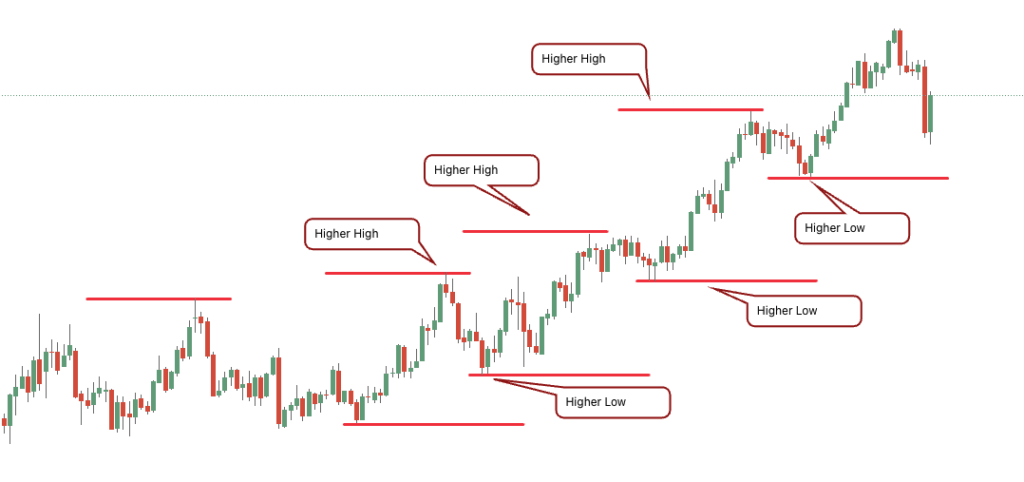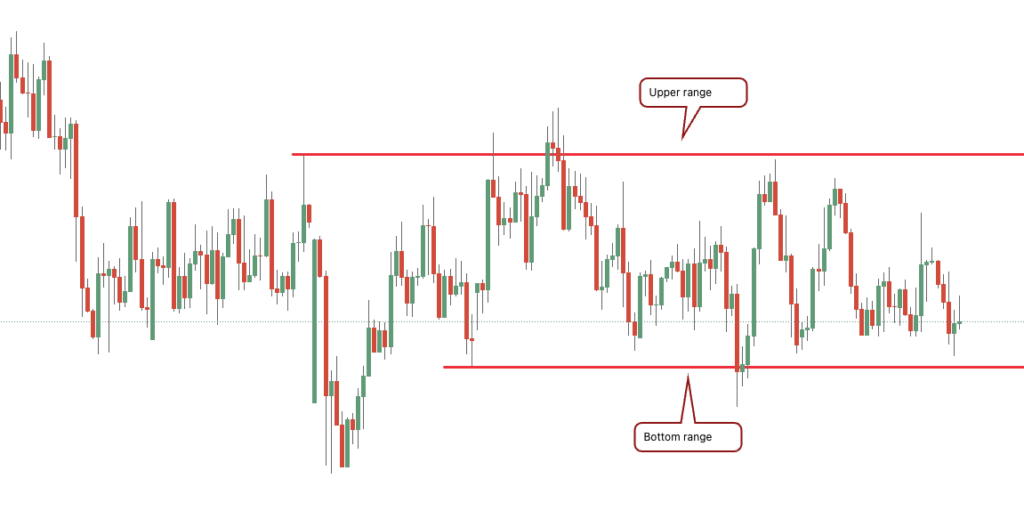Introduction to trend trading
Trend trading is one of the most popular and time-tested strategies in the Forex market. At its core, trend trading is about identifying the direction in which a currency pair is moving—and then entering trades that align with that direction.
What is a trend?
- Uptrend (Bullish): Price is making higher highs and higher lows

- Downtrend (Bearish): Price is making lower highs and lower lows

- Sideways (Ranging): Price moves within a horizontal range with no clear direction

Why do trends form?
- Economic data such as inflation numbers, interest rates, Non-farm Payrolls, retail sales etc
- Central bank policies (e.g., rate hikes)
- Market sentiment (fear/greed)
- Global news or geopolitical events
Why trade trends?
- You trade with the market, not against it
- Fewer trades, but higher probability setups
- Easier to manage risk with clear structure
- Trends are easier to read than choppy, directionless markets
When trend ends
- Reverse into a new trend
- Flatten into a range
- Fake out before continuing
- Price fails to make a new higher high (in an uptrend) or lower low (in a downtrend)
- Structure flips — e.g., lower low forms in an uptrend
- Price breaks below a key swing point or consolidates sideways for too long
